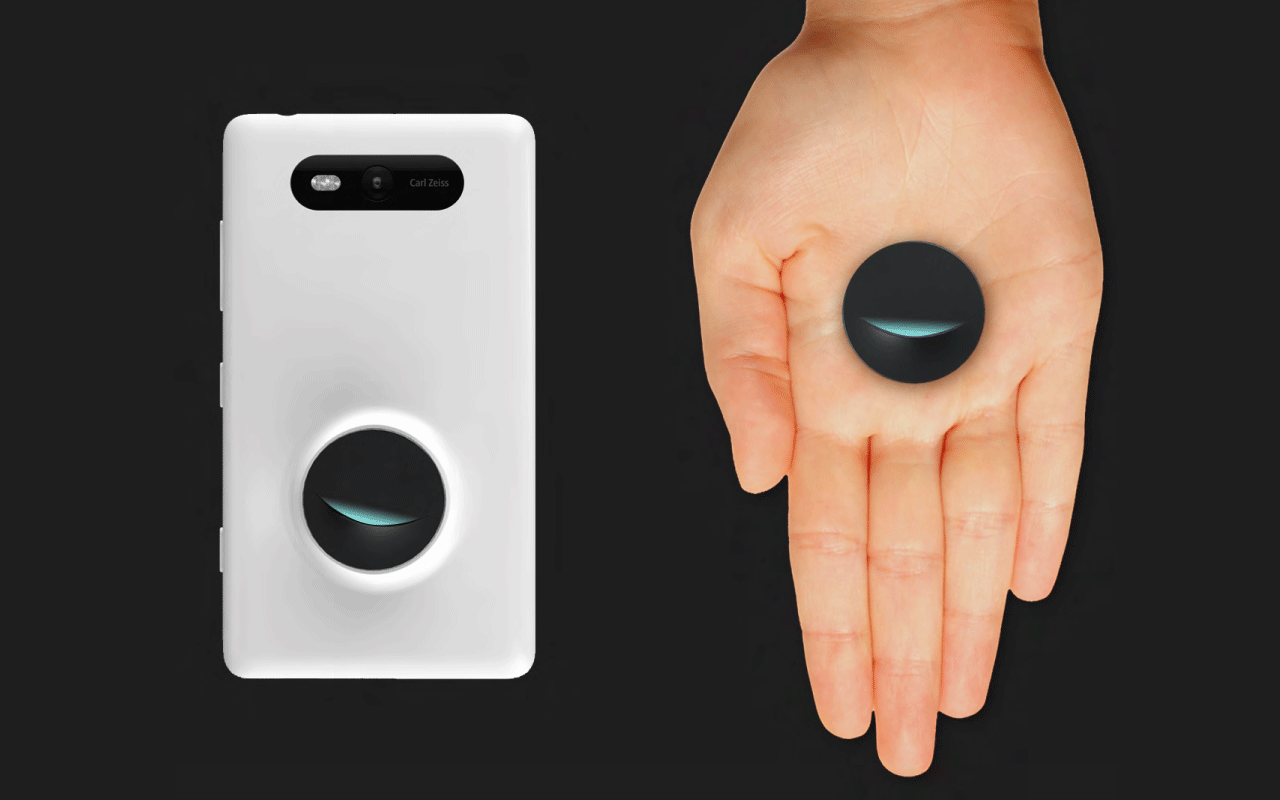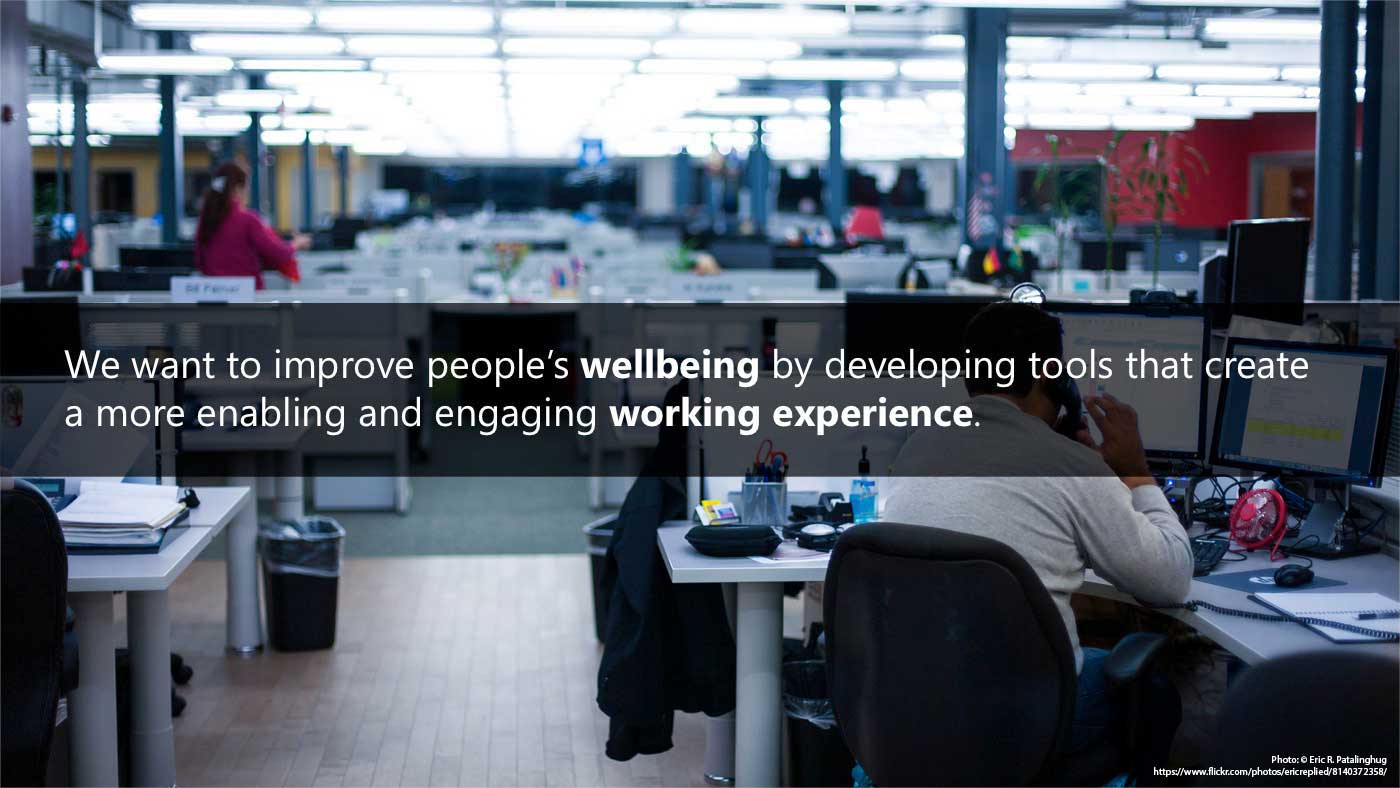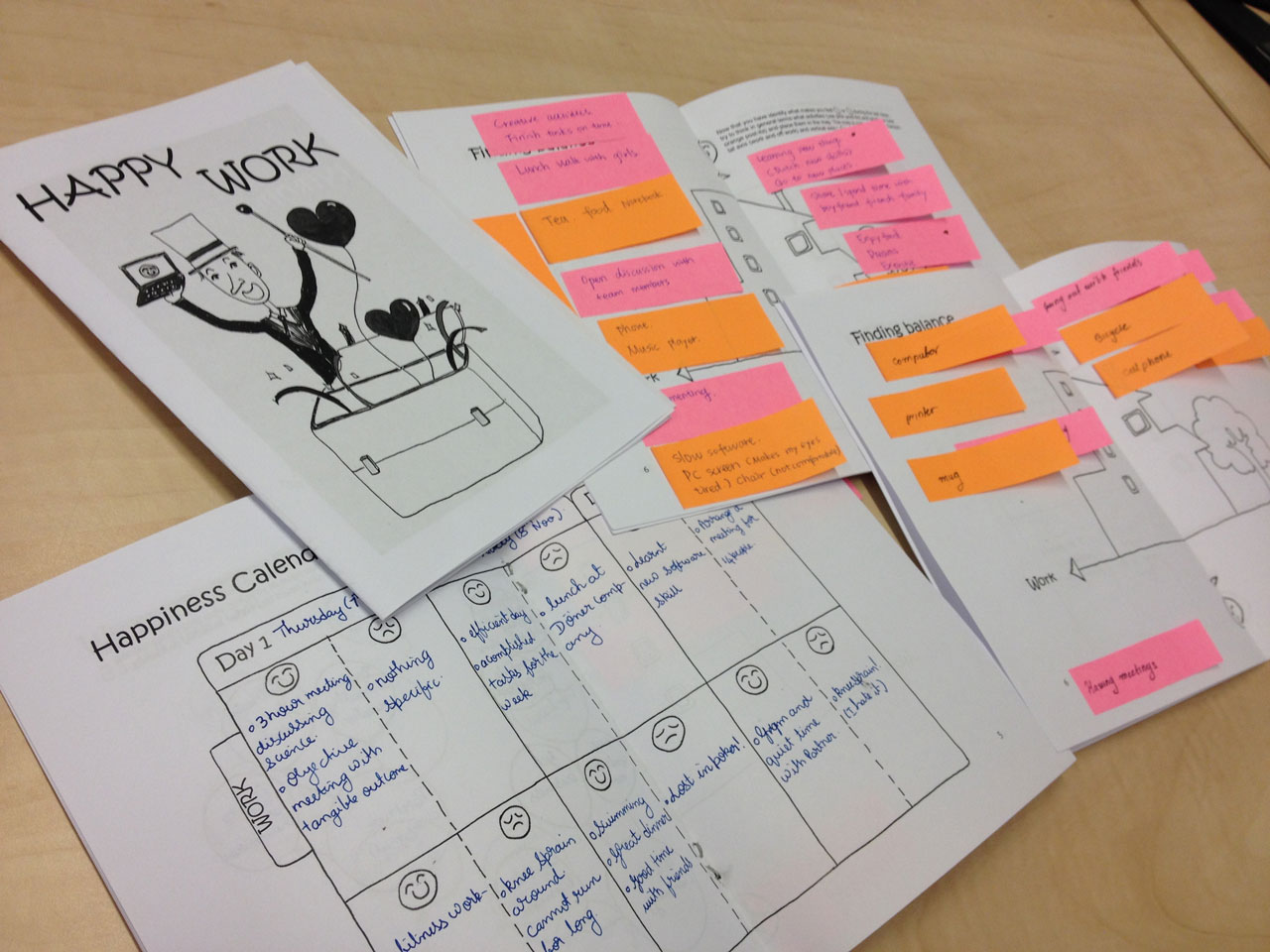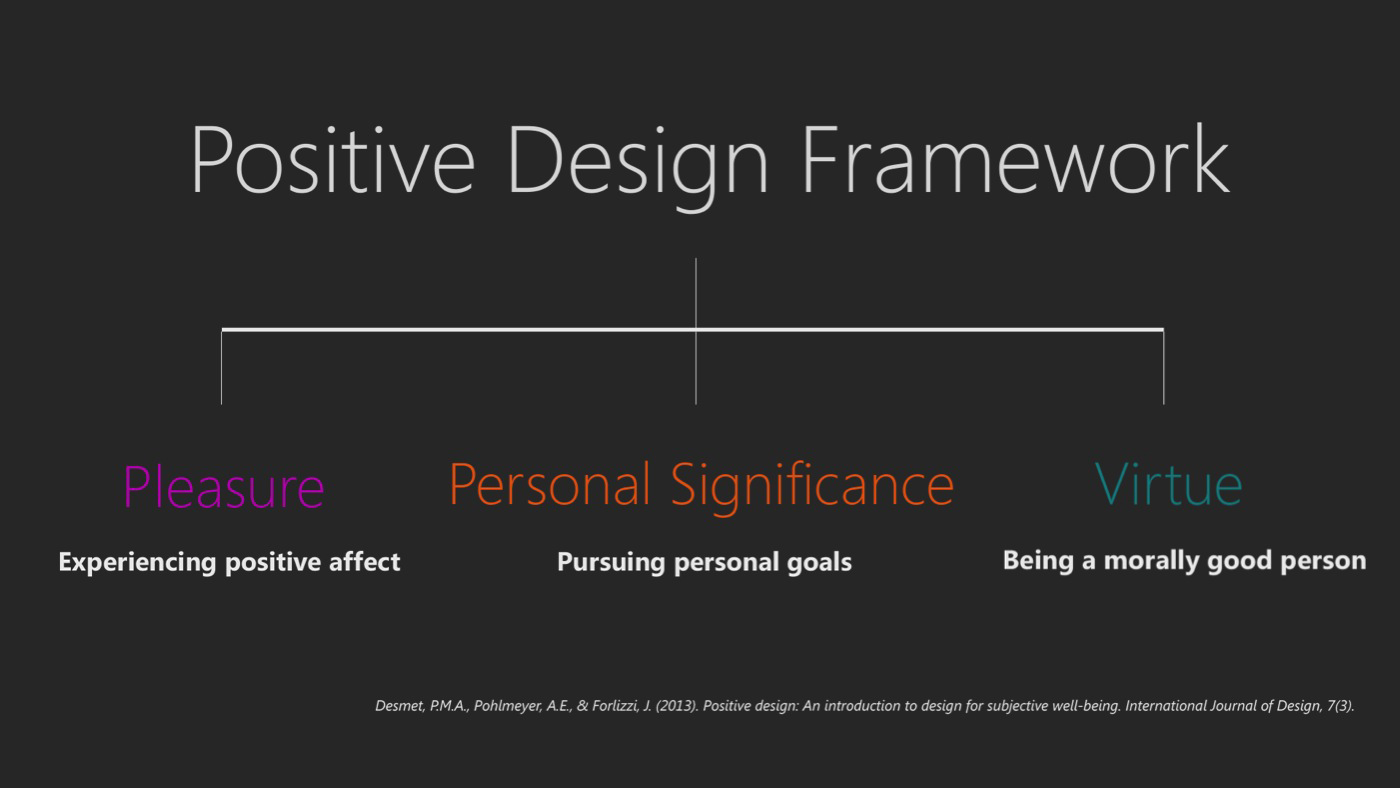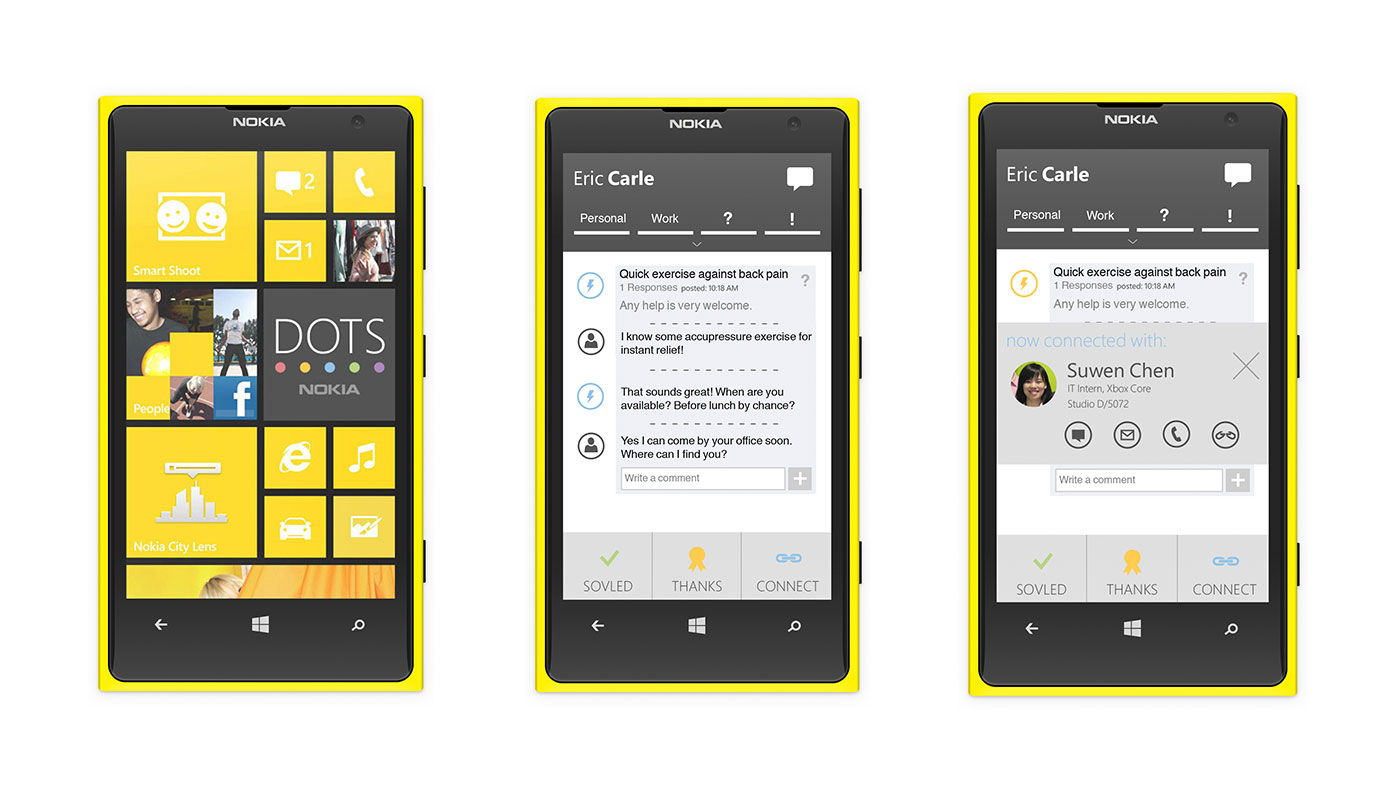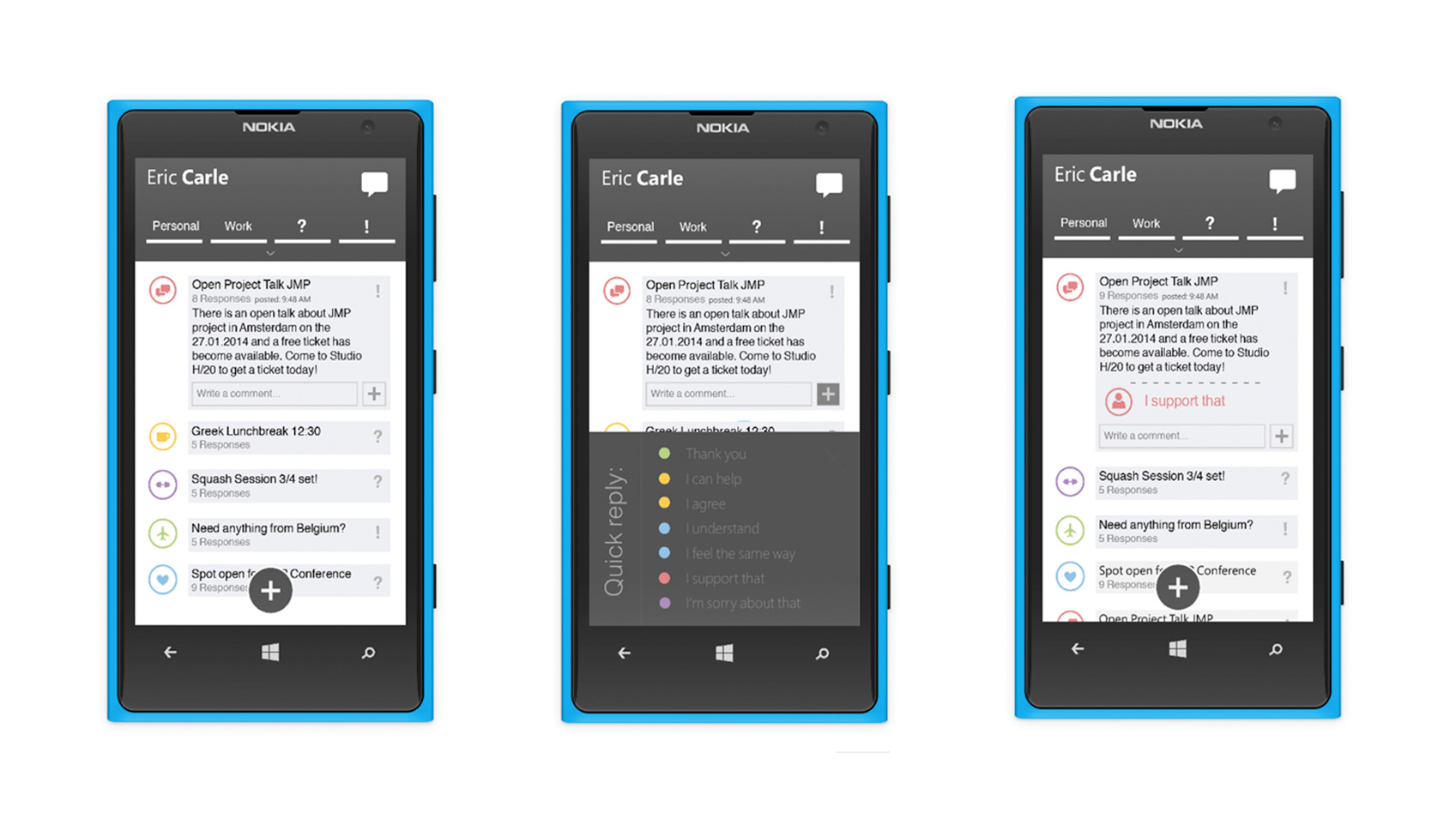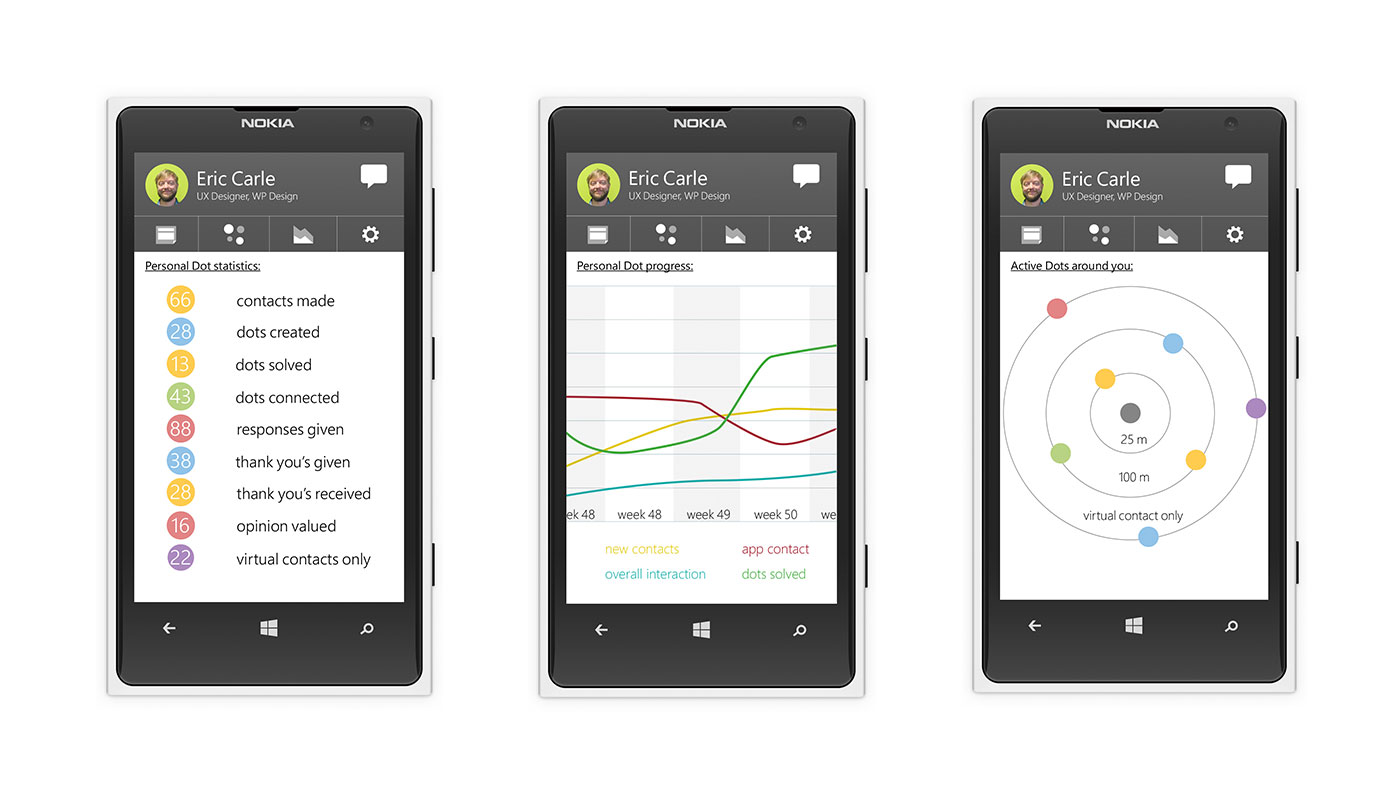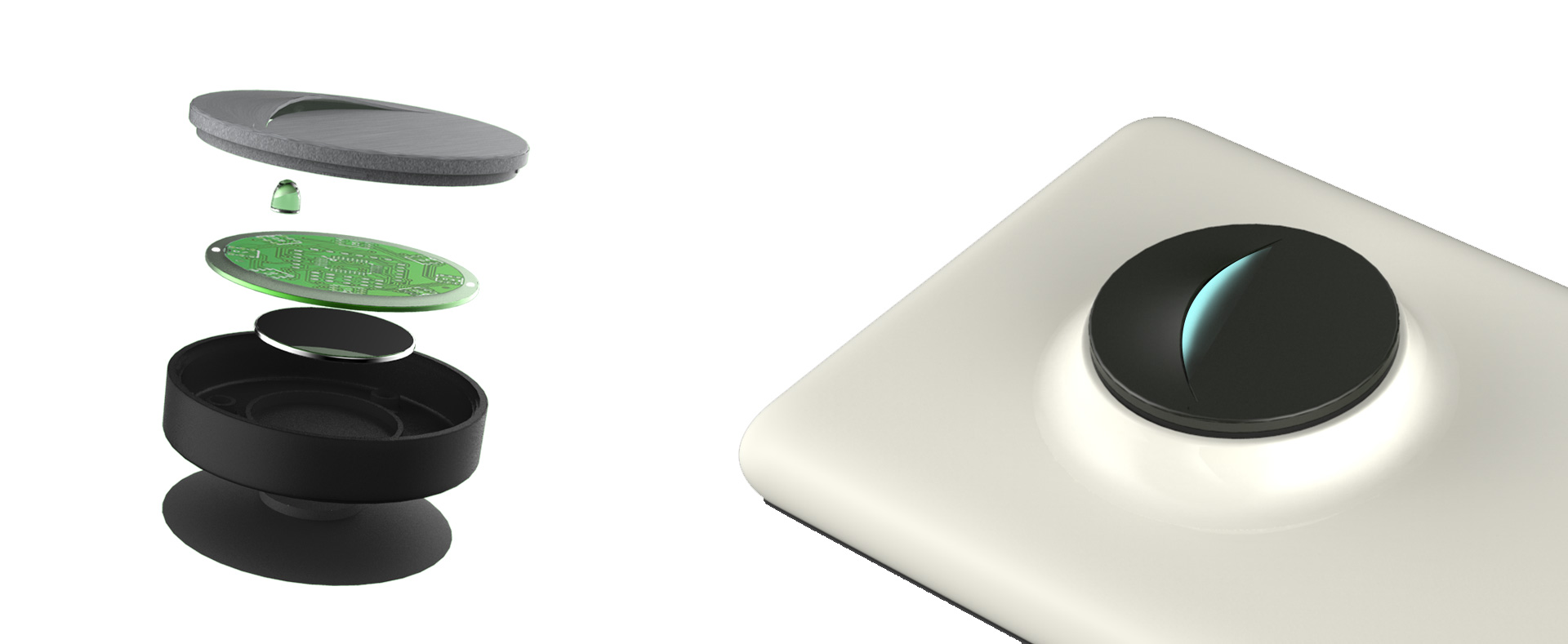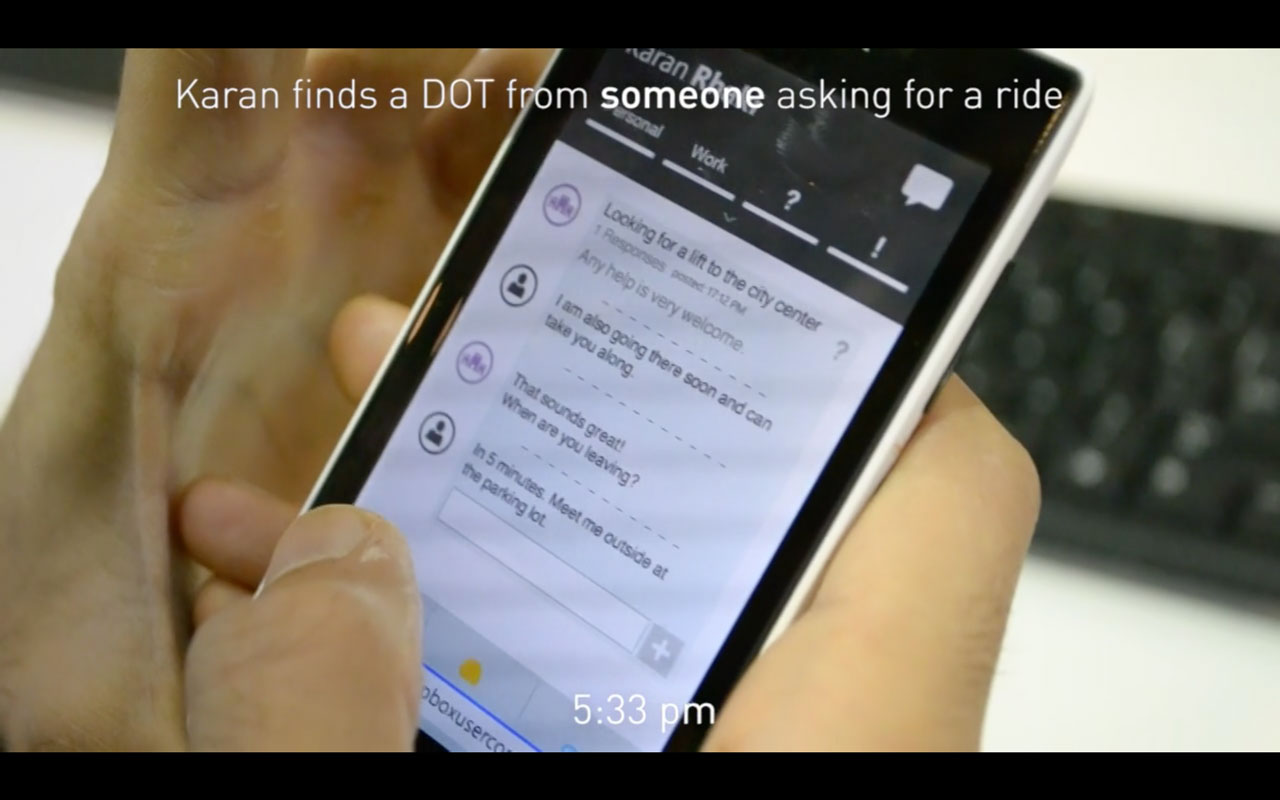Project overview
-
Context
This project was developed as part of TU Delft's Joint Master Program (JMP) in which students collaborate as a closed team to work on a solution for a client while covering all three of TU Delft's Design Master disciplines Strategic Product-, Integrated Product-, and Interaction Design.
Nokia was won as a partner for this project based on the team's own preference and personal inquiry as the TU Delft commonly does not assign client partners for this program.The resulting case study has been carefully researched and developed by taking the crucial aspects of user-centered design, business strategy and production planning into account and documented for the client in form of a report plus a concept video.
-
Team

Our international team consisted of these great people:
-
Santiago De Francisco (Colombia) - Design for Interaction
-
Youge Xiao (China) - Integrated Product Design
-
Suwen Shen (China) - Integrated Product Design
-
Karan Shah (India) - Strategic Product Design
-
Eric Ringard (Germany) - Design for Interaction
-
Andrei Ganci (Rumania) - Strategic Product Design
-
-
contribution
Due to the nature of this shared interdisciplinary project, every team member was collaborating closely and involved in almost all tasks and decisions throughout the process. This enabled everybody to learn a lot about key factors that go beyond one's own specific study program and also inspire each other with personal working methods and processes. Hence the project's results were obviously shaped by everyone's influence.
My personal focus and contributions covered the following points:
• qualitative and quantitative design research
• active ideation and concept development
• creating quick prototypes and paper mockups
• wireframing and designing the user experience
• creating the user interfaces and mobile prototype
• acting (badly) in the concept movie
• final presentation
